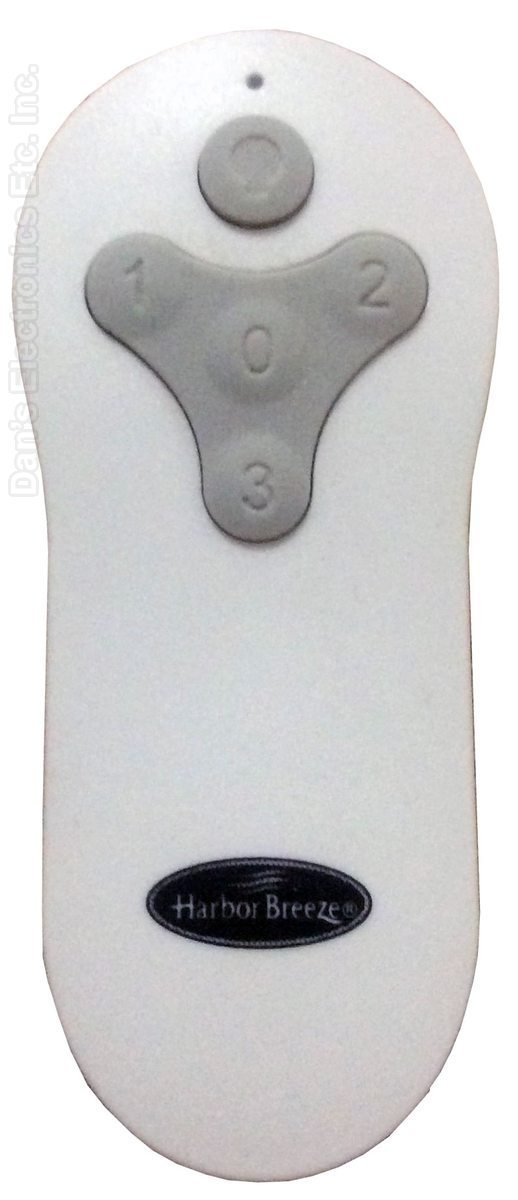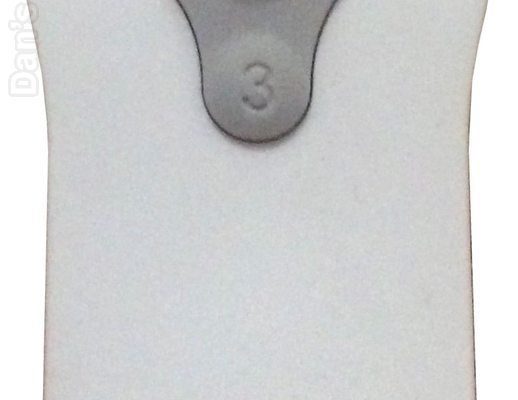
The whole setup feels like blending modern coffee with an old-school percolator. The pieces mostly fit together, but sometimes things taste a bit…off. So let’s break down what actually happens when you put LED bulbs in a Harbor Breeze ceiling fan, especially if you want the remote to work perfectly with them. I’ll walk you through what works, what can glitch, and how to get everything running smoothly—without needing a degree in electrical engineering.
How Harbor Breeze Ceiling Fan Remotes Work
If you’ve just moved into a place with a Harbor Breeze fan, or you bought one on a whim because the box promised “easy remote control,” you might be curious how the whole system ticks. The remote itself isn’t magic. It sends a coded signal—usually via radio frequency (RF)—to a receiver hidden up in the fan’s canopy above the blades. That receiver acts like the fan’s brain, controlling both the fan motor and the light based on what you click on the remote.
*Pairing* the remote is pretty straightforward. Usually, you pop in the batteries, set a few dip switches or sync codes (those are tiny toggles inside the battery compartment), and match them with the receiver. If things stop working, you might need to *reset* the system or *troubleshoot* by re-syncing the code. Honestly, most people never dig into these settings until something malfunctions.
The most important thing: that receiver and remote combo was originally designed for old-school incandescent or CFL bulbs. Those bulbs draw power in a way the receiver expects; swap in something more modern, and you can run into communication problems—not because the remote itself is outdated, but because its “brain” doesn’t always speak LED.
Why LED Bulbs Sometimes Don’t Play Nice with Fan Remotes
Here’s where things get a bit technical, but stick with me. LEDs and incandescents may both turn light on and off, but they handle electricity very differently. Incandescent bulbs are simple—they’re like a garden hose with water always flowing steadily. LED bulbs, on the other hand, use drivers and circuits that turn the flow on and off rapidly, at a microscopic scale. That’s why LEDs are so efficient, but it’s also why they sometimes *flicker* or *don’t dim* properly with certain remotes.
Harbor Breeze remotes often use a dimming function. The old receivers weren’t built with LED technology in mind, so their dimming method can confuse modern bulbs—or worse, damage them. For example, you might notice:
- Flickering or strobing when trying to dim the lights
- Lights not turning on/off with the remote, but working fine with the wall switch
- A buzzing sound coming from the fan or bulbs
- Bulbs randomly flashing or refusing to stay at a set brightness
If your lights are doing any of those annoying things, it’s almost always a compatibility problem between the *remote’s receiver* and the *LED bulb* drivers.
Choosing Compatible LED Bulbs for Harbor Breeze Fans
Honestly, not all LED bulbs are created equal—especially when it comes to ceiling fan remotes. Some are *dimmable*, some aren’t. Even if a bulb says *”dimmable”* on the box, it might not work flawlessly with every remote system (especially older Harbor Breeze receivers).
When looking for LED bulbs for your fan, keep these tips in mind:
- **Choose “dimmable” LEDs if your remote has a dimming button.** But remember: “dimmable” just means the bulb *can* dim, not that it will dim nicely with every remote.
- **Look for bulbs labeled “compatible with ceiling fans” or “suitable for enclosed fixtures.”** Ceiling fan sockets often have unique airflow and temperature requirements, and using the wrong bulb shortens its lifespan.
- **Buy higher-quality, name-brand LEDs.** Bargain bulbs are more likely to flicker or not work at all with smart remotes.
- **Test one bulb before replacing all.** It sounds obvious, but it’s the fastest way to see if your specific combo works before spending money on four new bulbs.
You might be wondering: “Can I use *any* LED bulb if I don’t care about dimming?” In many cases, yes—the on/off function will work most of the time. Issues pop up mainly when you try to dim or sync with older remotes.
Fixing Common Problems When Using LEDs With Harbor Breeze Remotes
So you tried swapping in new LED bulbs, and now the remote’s acting strange. Don’t panic. There are a few *troubleshooting* steps to get things working again:
- **Check the Remote Batteries:** Dead or weak batteries can make signals unreliable. Swap in fresh batteries before doing anything complicated.
- **Re-Sync the Remote:** Sometimes the code between the remote and receiver is lost during a bulb change. Try resetting and re-pairing (usually by holding down the “fan off” or “light” button for 10 seconds).
- **Replace With TRUE Dimmable LEDs:** If the lights flicker only when you dim, try a different brand or a bulb specifically for compatibility with ceiling fans.
- **Flip the Wall Switch:** Sometimes, flipping the wall switch off and back on can reset the internal fan receiver.
- **Bypass the Dimmer:** Some older Harbor Breeze receivers can be rewired to send full power to the bulb socket, essentially disabling dimming. This is only for advanced DIYers, but it can stop flicker if you’re comfortable opening up the fan (always turn off the breaker first!).
If none of these work, it’s possible your Harbor Breeze fan’s receiver just isn’t compatible with LEDs—especially on older models. Upgrading the receiver (which usually comes with a new remote) is a surefire fix, but it can take a little handiwork.
Upgrading or Replacing Your Harbor Breeze Remote Receiver
Sometimes the only way to get perfect LED compatibility is by swapping out the receiver hidden in the fan canopy. Not the most fun weekend project, but it’s totally doable if you’re comfortable with basic wiring (or you can bring in an electrician). Here’s what’s involved:
- **Turn off power at the breaker:** Safety first. Never work on live wires.
- **Unscrew the fan canopy:** This is the cover at the ceiling where the fan meets the electrical box.
- **Locate and label the wires:** Take photos or label wires before disconnecting anything.
- **Remove the old receiver:** Unplug the existing receiver, which is usually a rectangular box.
- **Install a new, LED-compatible receiver:** Many universal receivers today advertise LED bulb compatibility and support for modern dimming codes.
- **Pair the new remote:** Follow the *pairing* instructions included with your new receiver and remote combo.
If you’re not comfortable with electrical work, there’s no shame in calling a pro. But swapping the receiver is often cheaper than replacing the entire fan—and lets you keep your Harbor Breeze hardware and style.
Comparing Harbor Breeze Factory Remotes to Universal Remotes
Maybe you’re thinking, “What if I just got a universal remote system? Would that fix my LED issue?” Here’s the scoop: universal fan remotes are made to work with a ton of brands, including Harbor Breeze. Some of them are newer and designed to be fully compatible with *dimmable* LED bulbs, so they often support proper dimming without flicker or ghosting.
Here’s a quick side-by-side of **factory** vs **universal** options:
| Harbor Breeze Factory Remote | Universal Fan Remote |
| Designed for original fan model | Works with most brands, including Harbor Breeze |
| Older receivers may struggle with LED bulbs | Newer models support dimmable LED bulbs |
| Replacement may require special order or matching codes | Often available at hardware stores and online |
| Limited advanced features | Some support smart home integration |
If you’re using a smart home system, choosing a universal remote that supports Alexa, Google, or HomeKit can future-proof your fan and lighting setup.
When It’s Time to Call for Help
Let me be real—sometimes, despite all the *resetting*, *re-pairing*, and bulb swapping, things just won’t cooperate. Maybe your receiver is too old, or there’s something funky in the wiring. If your lights are still flickering, buzzing, or refusing to work with the remote:
- Check if your fan model has known compatibility issues with LEDs (search by exact model number)
- Contact Harbor Breeze support, or visit your local Lowe’s customer service desk
- Bring in a licensed electrician if you’re not comfortable with ceiling fan wiring or if there’s persistent buzzing/hot wires
Sometimes, a fresh set of expert eyes will spot an overlooked issue—like a bad receiver, incompatible dimmer, or even a defective batch of bulbs.
Final Thoughts: Making Harbor Breeze Remotes Work with LED Bulbs
Mixing Harbor Breeze ceiling fan remotes and LED bulbs can feel like trying to teach an old dog new tricks. Most of the time, it’s doable: choose *dimmable* bulbs, double-check compatibility, and don’t hesitate to replace an old receiver if you’re running into issues. If you get stuck, a universal remote kit or a quick call to a pro can save hours of frustration.
Honestly, once you get it working, the energy savings and longer lifespan of LEDs make the effort worthwhile. Sit back, grab your remote, and enjoy both the breeze and the bright, flicker-free light—all from the comfort of your favorite chair.
